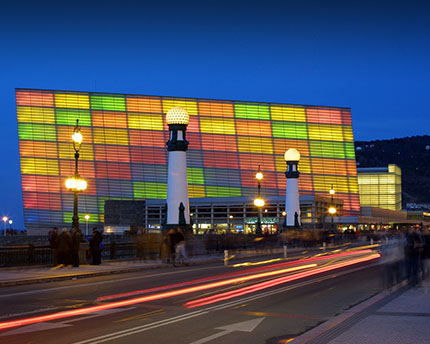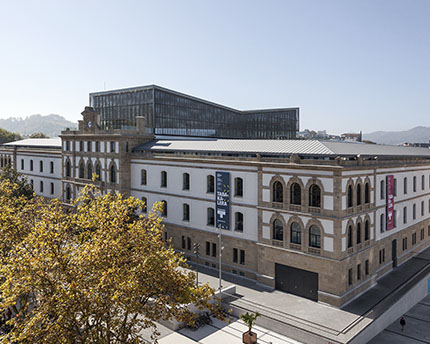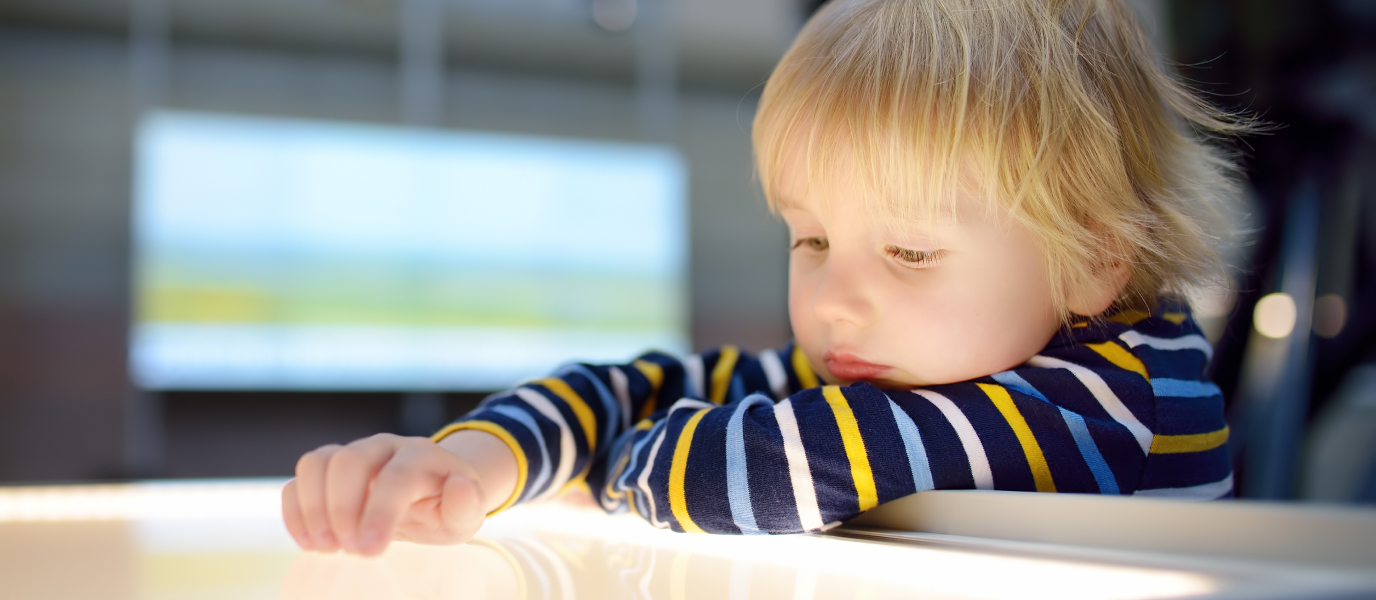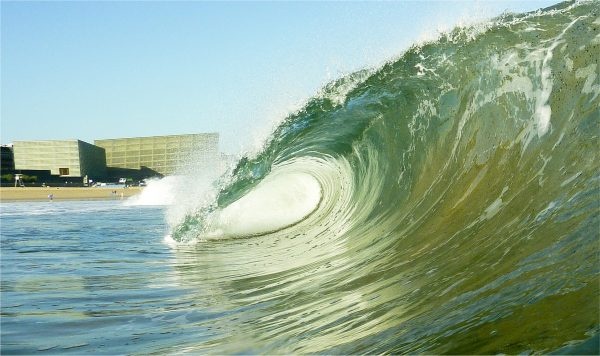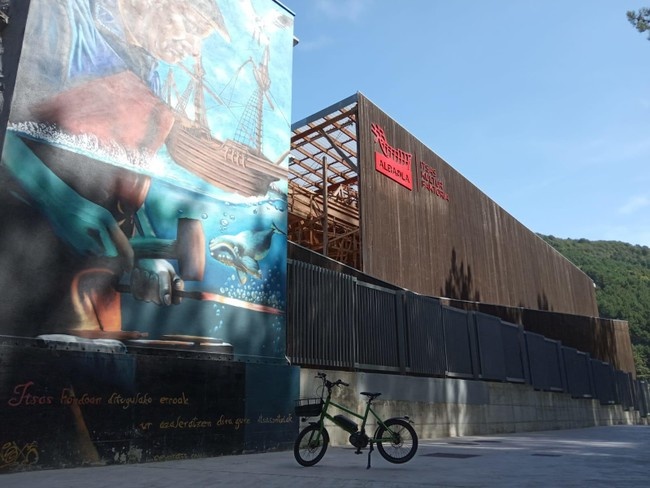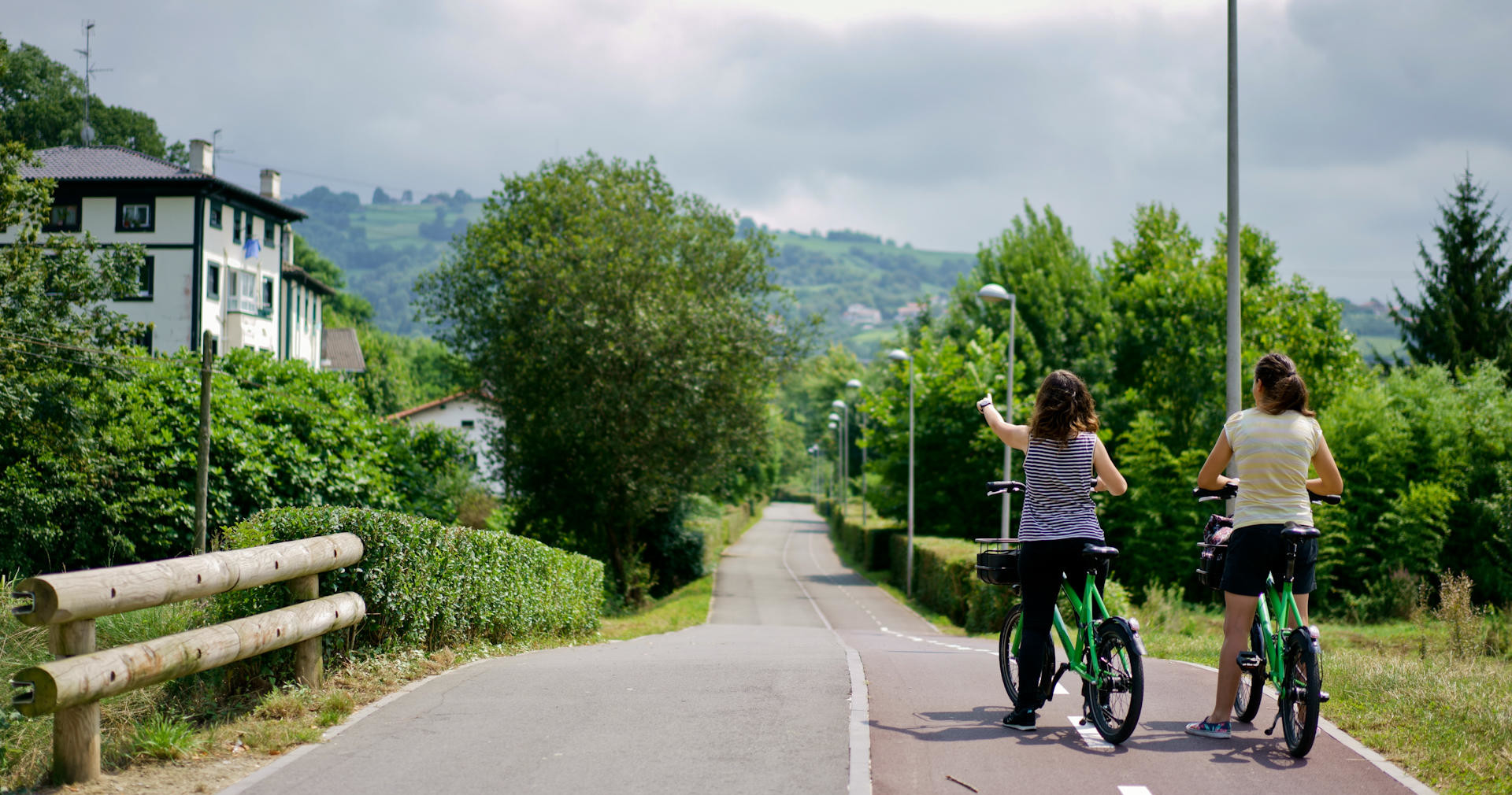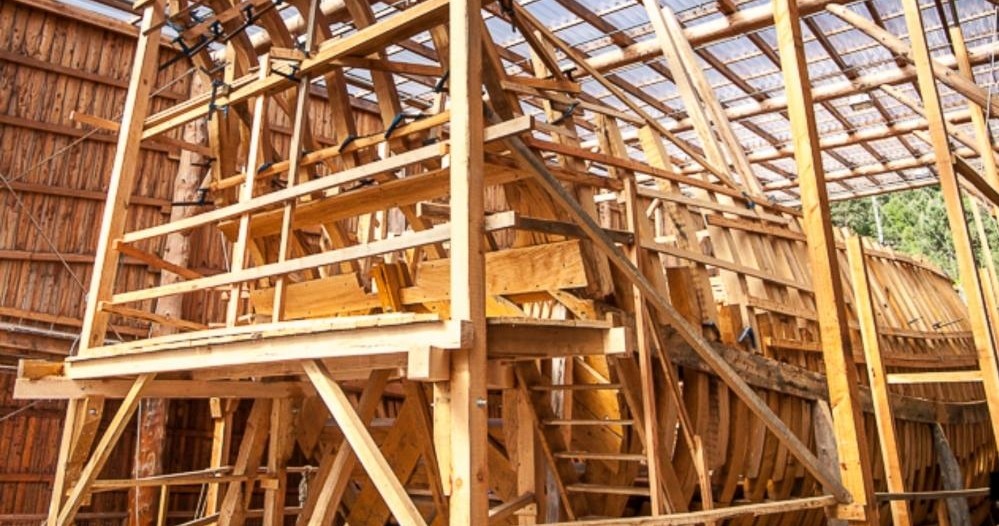Winner of the Mies van der Rohe Award for Best Building in Europe, the Kursaal Conference Centre and Auditorium is a hub for culture and recreation in San Sebastián. Rafael Moneo’s striking feat of architecture broke away from traditional aesthetics. The building sits next to the mouth of the Urumea River and you’ll be hard pressed to miss it during your trip to the town.
Once in the town centre, the Kursaal’s two monumental cubes of translucent glass burst out of the urban landscape from afar. The largest houses the auditorium, and the other is the conference centre. The complex also has a banquet hall with capacity for 770 diners, a large exhibition hall, underground parking for 500 vehicles, a cafe and a restaurant. Two outdoor terraces provide spectacular views: one over the mouth of the river, and the other looking out to Playa de la Zurriola.
An icon of the town
The closure and subsequent demolition of the old Casino del Kursaal in 1972 left a large vacant plot in one of the most prized areas of the town. However, it wasn’t until the local town hall acquired the plot in 1985 that it was given any value. Four years later, the local authorities put out a public tender for the grand cultural centre that the Kursaal is today. Several internationally renowned architects submitted proposals, among them Mario Botta, Norman Foster, Arata Isozaki, Juan Navarro Baldeweg and Luis Peña Ganchegui. The winner of course was Rafael Moneo, and in 1990 he got the Kursaal project off the ground. Moneo was the brain behind such spectacular buildings as the Museo Nacional Reina Sofía, the Museo de Arte Romano in Mérida and Atocha train station in Madrid. In San Sebastián, he conceived the Kursaal building as a sort of fluke geographical feature at the mouth of the Urumea River, designing the two ‘cubes’ as like two gigantic rocks hurled ashore by the ferocious sea.
Building works got under way in 1995 and were completed in 1999. In its first year the Kursaal hosted three of the most important cultural events in San Sebastián: Musical Fortnight, the Film Festival and Jazzaldia. Today, the silhouette of the Kursaal, with its two giant cubes inclined on both axes, is an enduring feature of the San Sebastián panorama.
Auditorium
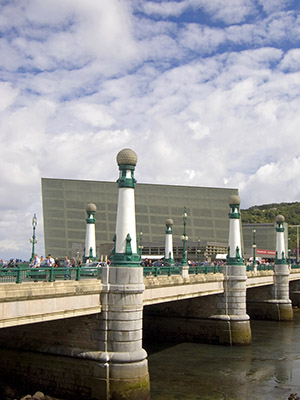
The auditorium has seating for 1,806 and is equipped with the most advanced technology, offering exceptional acoustics in a highly functional space. It provides simultaneous translation services, video and film projectors, CCTV, fibre optics, a voice and data network and more. There are two VIP suites, a bar, and a foyer that doubles as a venue for drinks receptions, dinners and presentations. The foyer is perhaps the crowning glory of the Kursaal: At 2,500 m2 and with two large windows affording sea views, the space is filled with light.
The 624-seat chamber hall has its own street access and is also equipped with the latest technology. The size and acoustics make it the perfect venue for chamber concerts.
Kursaal events: meetings, conventions, seminars and more
The Kursaal has 15 meeting rooms with capacity for between 10 and 575 people. These multi-functional spaces are used for corporate meetings, conventions, conferences, seminars, round tables, product launches and press conferences. There is also a 5,000-m2 space for exhibitions and fairs, complemented by more than 5,000 m2 of outdoor terraces which are perfect for product launches and outdoor concerts.
The Kursaal is the venue for all nature of conferences and cultural events (it has hosted more than 5,000 such events since opening its doors more than 20 years ago). The most famous are Jazzaldia (late-July), Musical Fortnight (August) and, of course, the Film Festival (second fortnight in September). For music lovers, the auditorium also hosts the concert season of the Basque National Orchestra, totalling 22 performances a year.
Huge LED display
To top it all off, an immense 1,500-m2 LED display on the front of the building announces what’s on in the Kursaal. It’s the biggest LED facade in Spain (and one of the largest in the world) and merges cleverly with the state-of-the-art architecture. It’s no wonder many international brands choose to bring their events to the Kursaal.
In 2001, the Kursaal won the Mies van der Rohe Contemporary Architecture Award (one of the most important European architectural honours) ‘for its conceptual, aesthetic, technical and construction innovation’.
Guided tours, tickets and programme
Guided tours have been available in the Kursaal since 2000 and more than 10,000 people passed through its doors in the first year alone. The tour lasts roughly an hour and takes you around the building’s public spaces.
Nobody disputes that the Kursaal has been a huge economic driver and galvanised change in the urban environment. The space is a magnet for knowledge; a meeting place that has had a clear cultural impact on the town. By night, the building illuminates San Sebastián as though it were a lighthouse.
It’s worth seeing the Kursaal from the inside to appreciate the light and sense of space created by the more than 10,000 glass panels used in its construction. If the occasion arises, make sure to take in one of the many performances in its packed programme.
Eating in the Kursaal
The banquet hall along with Restaurante Ni Neu and all the lunches and formal dinners held in other areas of the building are overseen by two-Michelin-star chef Andoni Luis Aduriz and Bixente Arrieta.
Anything is possible in the Kursaal, gastronomically speaking. Whether an à la carte lunch, a quick coffee, a banquet for 1,500 guests, a drinks reception for 1,800 or a pintxo workshop for small groups, there are plenty of ways to enjoy Basque cuisine at the Kursaal and all with the sea as your backdrop.





























































